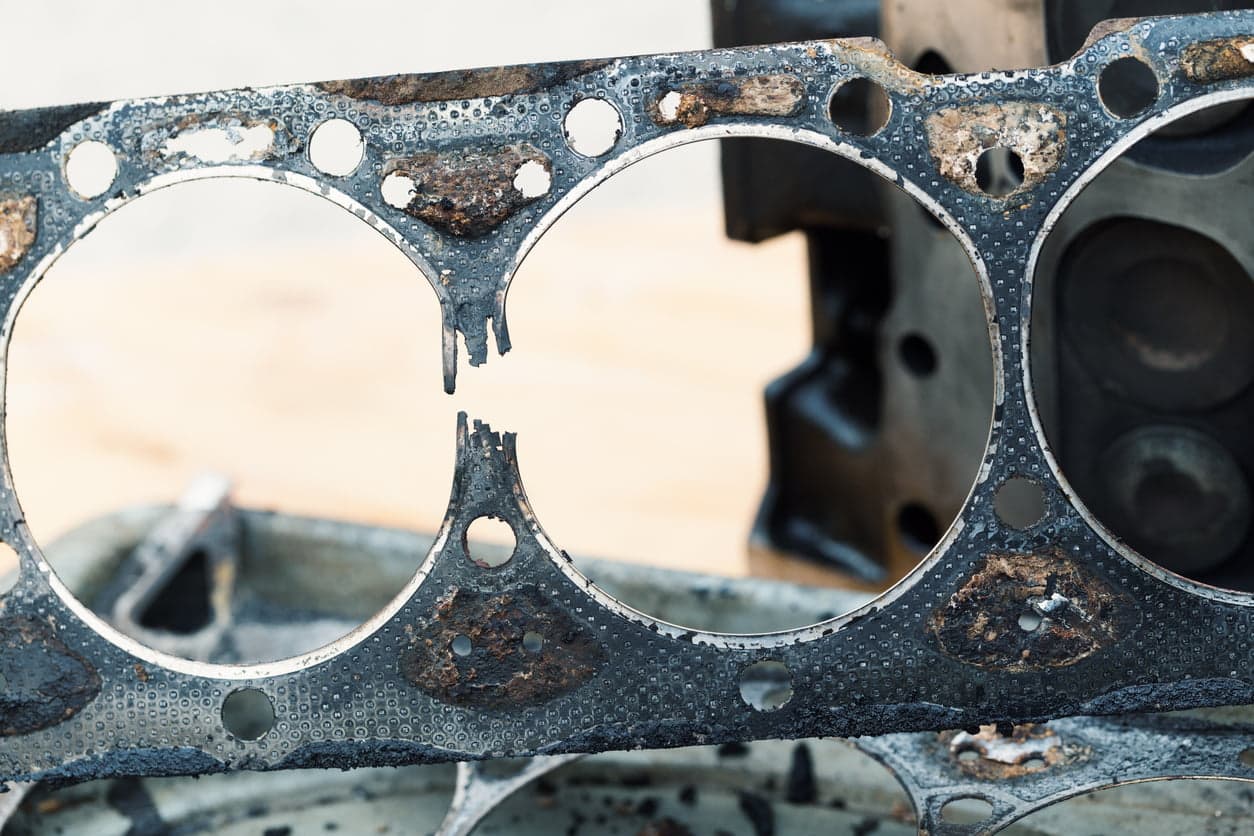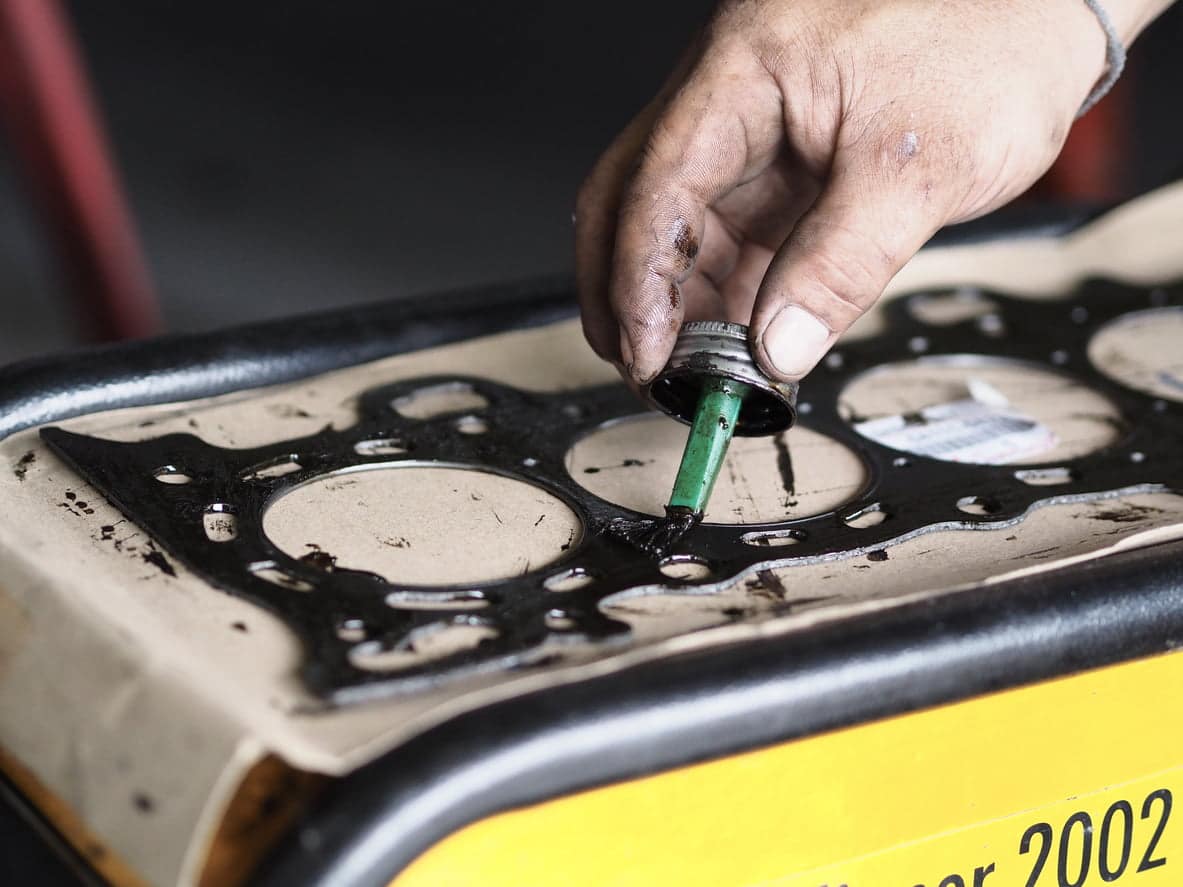The head gasket is a critical component beneath the bonnet, providing a seal between the cylinder head and engine block. While it’s quite rare to get a fault in the head gasket, it’s important to know what the signs are so you can diagnose and fix it before it becomes a bigger issue.
In this guide, we’ll be providing a complete overview of head gasket faults, the signs to look for, and how much it costs to replace a blown head gasket. Use the links below to find the information you’re looking for.
Quick Links
- What is a Blown Head Gasket?
- What Are the Signs of a Blown Head Gasket?
- Can You Drive with a Blown Head Gasket?
- How Much Does it Cost to Replace a Head Gasket?
- Can You Repair a Head Gasket Yourself?
- How Long Do Head Gaskets Last?
- What’s the Best Way to Maintain a Head Gasket?
What is a Blown Head Gasket?
A blown head gasket happens when the seal between the cylinder head and engine block fails. The head gasket sits between these two areas of the engine, sealing the coolant passage, oil return passages, cylinders and pistons.
When the head gasket fails, these channels are no longer sealed, which can result in coolant leaks, oil leaks or gases escaping from the combustion chamber. A blown head gasket happens when the engine overheats, causing an increase in thermal pressure which puts immense strain on the gasket.

What Are the Signs of a Blown Head Gasket?
A blown head gasket shares similar symptoms to other engine faults, including overheating, but there are a few signs that can tell you exactly what you’re dealing with. Below, we list some of the classic things to look for when diagnosing a blown head gasket:
- Thick white smoke billowing from the exhaust. This suggests that coolant/antifreeze and oil are being burned up in the combustion chamber after leaking through a faulty gasket.
- Poor engine performance and rough idling noise. Because the combustion chamber is no longer correctly sealed, this results in the inefficient combustion of fuel and air, leading to a rough idle noise and overall drop in performance.
- Milky coloured engine oil. If the gasket blows to the point where coolant/antifreeze leaks into the oil return passages, you might find that your car’s engine oil appears milky.
- Overheating engine or bubbles in the radiator. This is caused by gases from the combustion chamber escaping into the cooling system, leading to rapid engine overheating and bubbling in the radiator cavity.
- Obvious oil or coolant leaks on the exterior of the car. You might notice a pool of liquid on the floor under where your car has been parked. This happens when fluid drains through a crack or fault in the gasket seal.
Some symptoms of a blown head gasket may be very minor at first, to the point where you don’t notice or can ignore them. But, whenever possible, always get any symptoms checked over by a professional mechanic, as small problems can become very big and very expensive quickly in the case of a faulty head gasket.
Can You Drive with a Blown Head Gasket?
It is possible to drive with a blown head gasket, but we wouldn’t recommend it. As we touched on above, small problems like a rising temperature gauge or smoke coming from the exhaust can quickly cause much bigger problems – particularly if coolant/antifreeze gets into the oil.
In the worst-case scenario, you might need an entire engine rebuild or a replacement head gasket if you ignore the symptoms for too long. If you catch it early enough, a faulty head gasket can be repaired without a full replacement, which will not only save you time and money, but could also mean the difference between you not having to buy a new car.
It’s important to know the symptoms of a blown head gasket so that you don’t continue driving and cause bigger problems. At the first sign of any problems, always get your car checked over by a professional mechanic who will be able to diagnose the issue and come up with a good solution.
How Much Does it Cost to Replace a Head Gasket?
A head gasket replacement can cost anything from £500 to thousands of pounds depending on the garage and the make and model of your car. It’s one of the most expensive mechanical issues to sort out, which is why a lot of drivers feel forced to send their car to the scrapheap rather than fork out for a replacement – otherwise, it’s a false economy.
The actual head gasket itself is quite affordable. Where costs really start to add up is in the labour. Because the head gasket is seated at the centre of your engine, the work needed to disassemble and reassemble the engine alone can take up to and over 10 hours – so you can see why a head gasket replacement would be so pricey.

Can You Repair a Head Gasket Yourself?
In some cases, you might be able to repair a head gasket. This is only when there’s a very small leak, which is causing symptoms like overheating and a loss of coolant/antifreeze.
To repair a leaky head gasket, you’ll need to use a sealant. Our sister brand, Holts, produces a professional cooling system leak repair called Wondarweld, which is designed to seal cracks in the head gasket, cylinder heads and engine blocks, for a permanent repair.
Remember, the earlier you diagnose a blown head gasket, the more likely it is that you’ll be able to use a sealant to repair it, without the need for a full replacement.
How Long Do Head Gaskets Last?
Head gaskets typically last 200,000 miles, which is considered about the lifetime of most cars. That means, if you look after your car and follow the service schedule, you should never be faced with a blown head gasket.
What’s the Best Way to Maintain a Head Gasket?
Sticking to the manufacturer’s recommended service schedule is the best way to maintain critical components like the head gasket. When flushing the coolant/antifreeze, make sure to replace it with a high-quality product which offers excellent protection for the engine.
We hope this guide has been useful in helping you troubleshoot your car’s head gasket. For more how-to guides and motoring features, take a look at the Prestone blog, or for our complete range of engine additives and fuel system cleaners, visit the homepage today.
